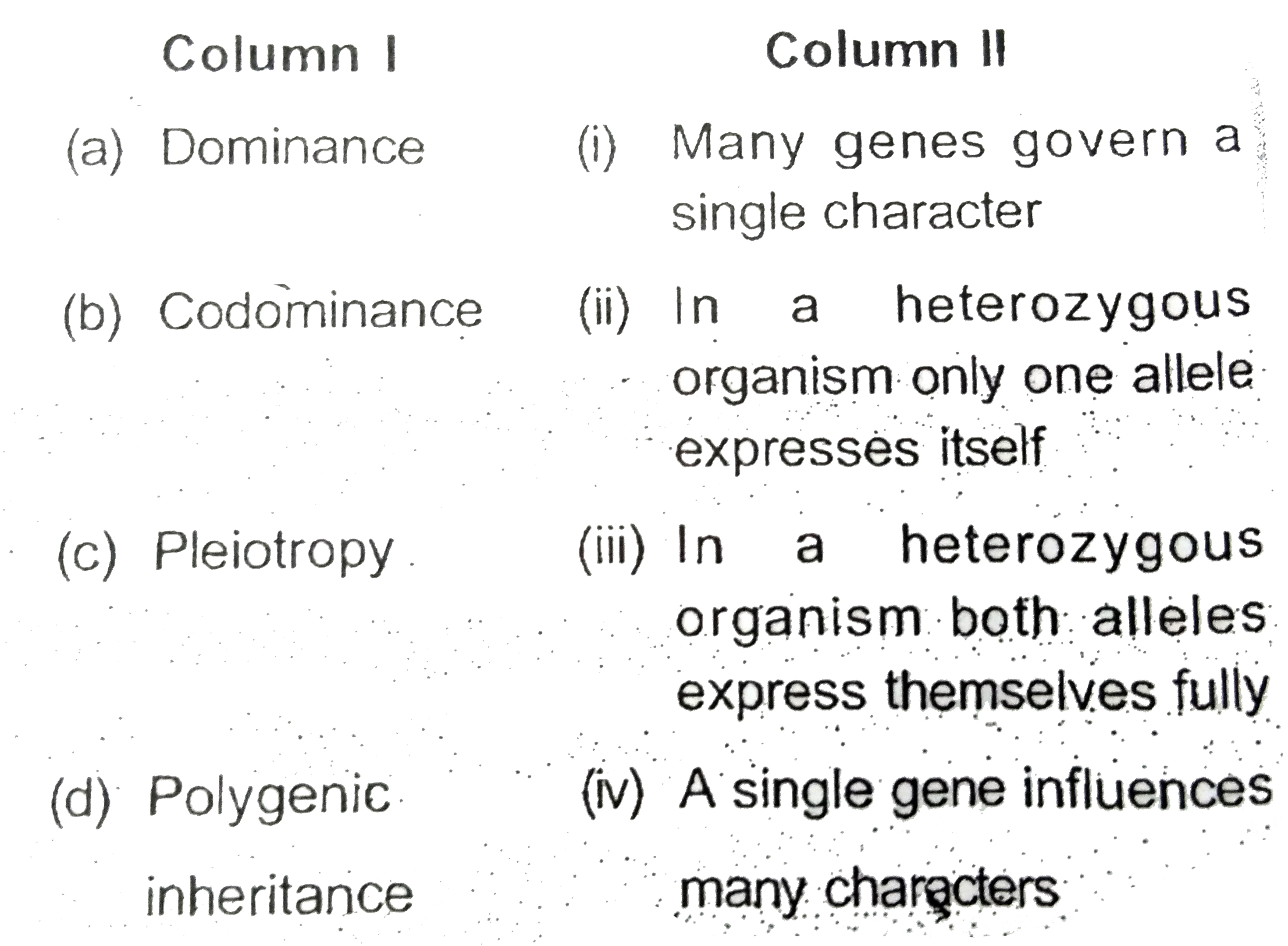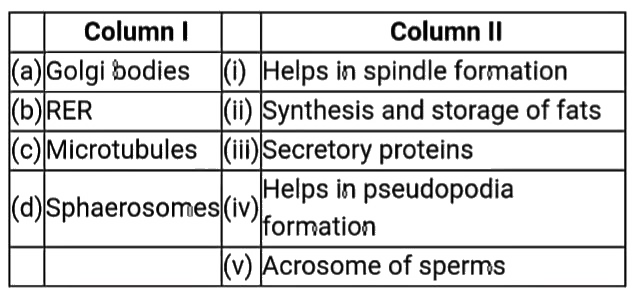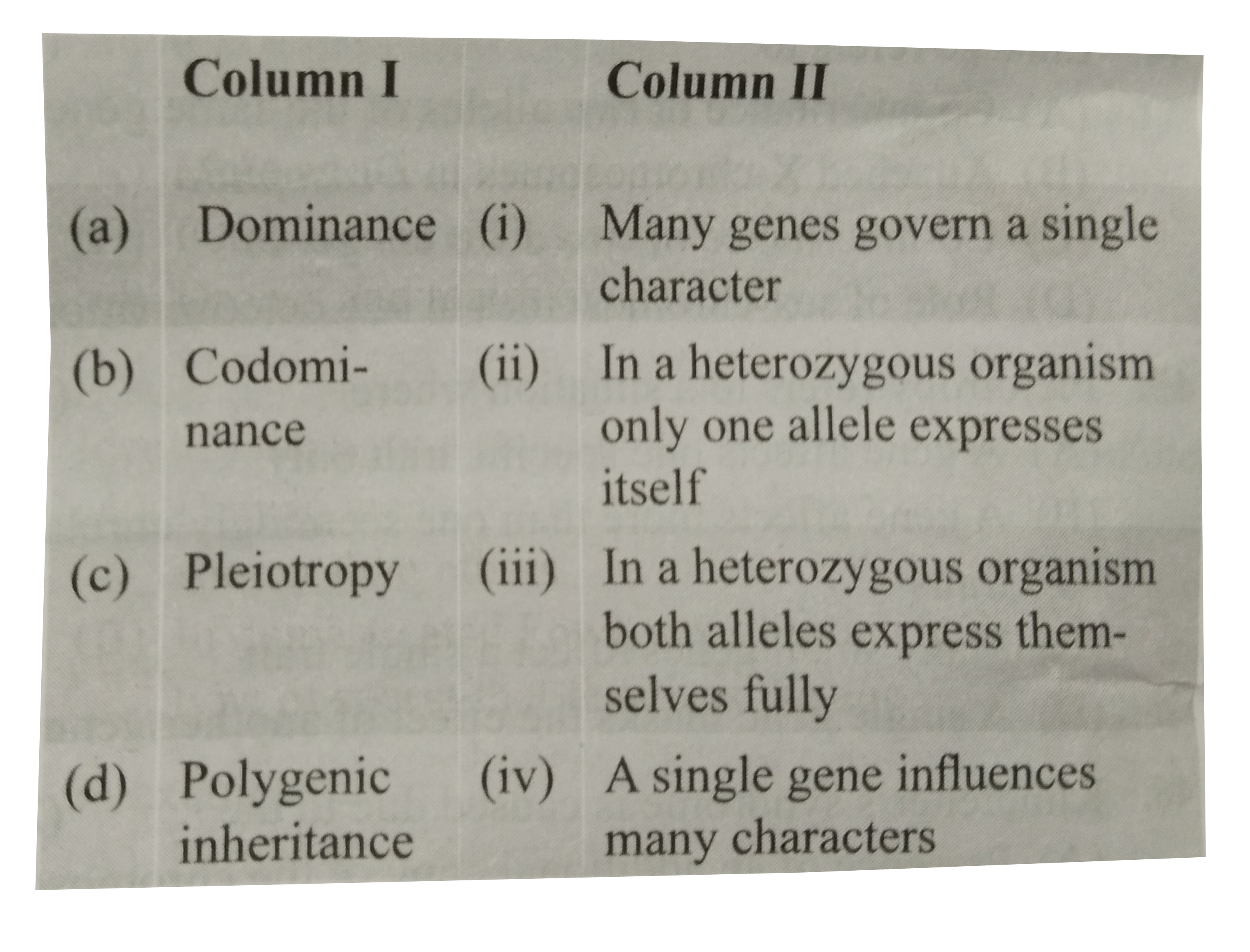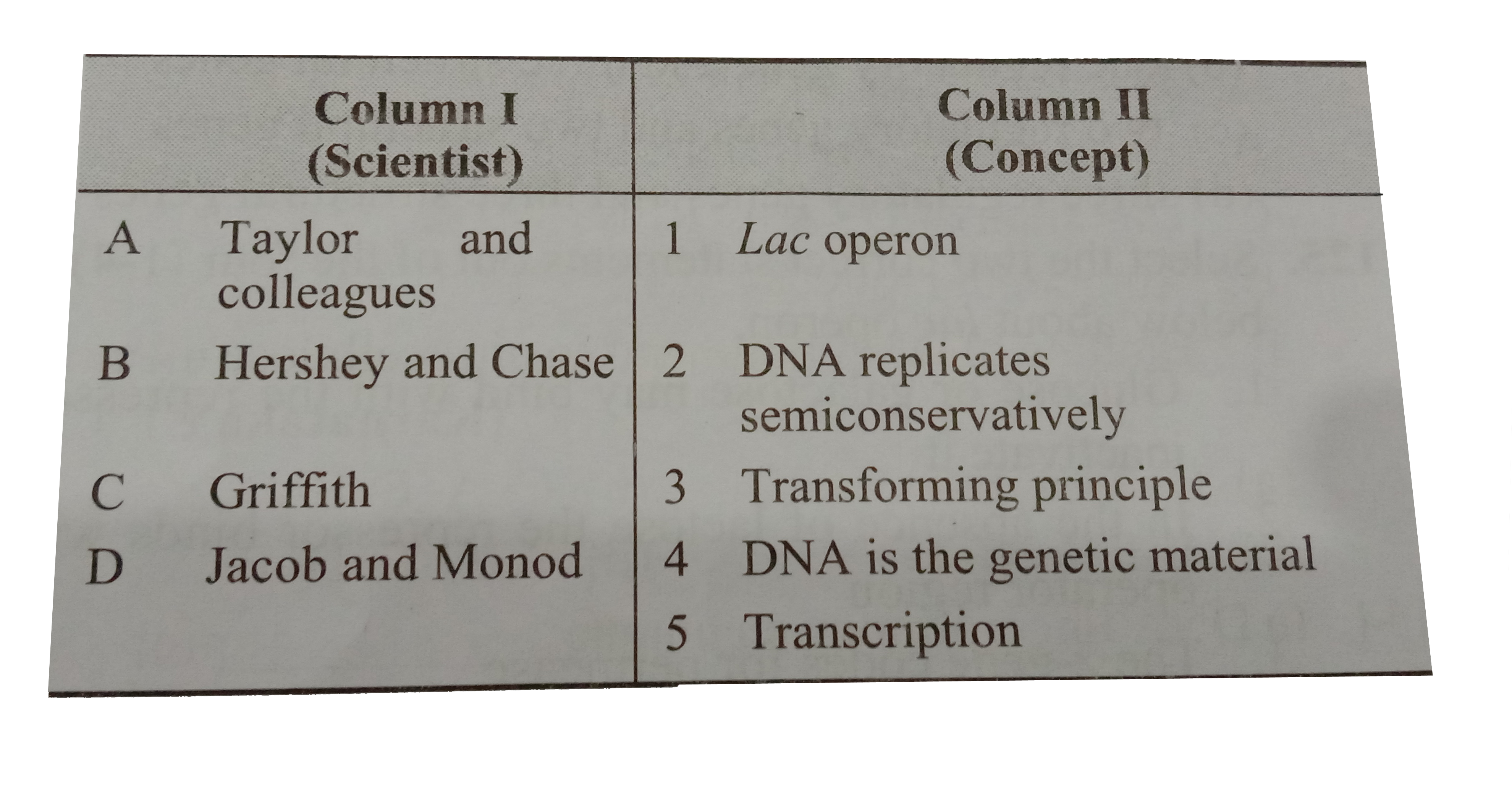Match the entires of Column I with appropiate entires of column II and choose the correct option out of the four option (a) ,(b) ,(c ) (d) given at the end of each question
column IcolumnII(A)Device in which chemical energy is converted into electrocal energy(p)Electrolysis(B)Device which keeps electrical neutrality in two half reactions in an electrochemical cell(q)Redox titration(C)A process in which electric energy is used to bring about decompostion of an electrolye(r)Eelctrochemical cell(D)Process which involves reactions between oxidising and reducing agents to estimate the amount of unknown substence in solution(s)Salt bridge
A-r,B-s,C-p,D-q
A-r,B-s,c-q,D-p
A-s,B-p,C-r,D-q
A-p,B-r,c-s,D-q
The correct Answer is:a
To solve the matching question, we need to carefully analyze the entries in both Column I and Column II. Let's break down the entries step by step.
1. Identify the first entry in Column I:
- (A) "Device in which chemical energy is converted into electrical energy"
- This describes an electrochemical cell. Thus, we can match (A) with (r).
2. Identify the second entry in Column I:
- (B) "Device which keeps electrical neutrality in two half reactions in an electrochemical cell"
- This describes a salt bridge, which maintains the balance of charge in an electrochemical cell. Thus, we can match (B) with (s).
3. Identify the third entry in Column I:
- (C) "A process in which electric energy is used to bring about decomposition of an electrolyte"
- This describes electrolysis, where electrical energy is used to decompose substances. Thus, we can match (C) with (p).
4. Identify the fourth entry in Column I:
- (D) "Process which involves reactions between oxidising and reducing agents to estimate the amount of unknown substance in solution"
- This describes a redox titration, which involves the reaction of oxidizing and reducing agents. Thus, we can match (D) with (q).
Summary of Matches:
- (A) → (r) Electrochemical cell
- (B) → (s) Salt bridge
- (C) → (p) Electrolysis
- (D) → (q) Redox titration
Final Answer:
The correct matches are:
- A → r
- B → s
- C → p
- D → q
Now, let's choose the correct option based on the matches we have made.
- (A) "Device in which chemical energy is converted into electrical energy"
- This describes an electrochemical cell. Thus, we can match (A) with (r).
- (B) "Device which keeps electrical neutrality in two half reactions in an electrochemical cell"
- This describes a salt bridge, which maintains the balance of charge in an electrochemical cell. Thus, we can match (B) with (s).
- (C) "A process in which electric energy is used to bring about decomposition of an electrolyte"
- This describes electrolysis, where electrical energy is used to decompose substances. Thus, we can match (C) with (p).
- (D) "Process which involves reactions between oxidising and reducing agents to estimate the amount of unknown substance in solution"
- This describes a redox titration, which involves the reaction of oxidizing and reducing agents. Thus, we can match (D) with (q).
- (A) → (r) Electrochemical cell
- (B) → (s) Salt bridge
- (C) → (p) Electrolysis
- (D) → (q) Redox titration
The correct matches are:
- A → r
- B → s
- C → p
- D → q
Topper's Solved these Questions
- BOOK - PRADEEPCHAPTER - REDOX REACTIONS EXERCISE - Matrix Match Type Question3videos
REDOX REACTIONS
- BOOK - PRADEEPCHAPTER - REDOX REACTIONS EXERCISE - Integer Type Question8videos
REDOX REACTIONS
- BOOK - PRADEEPCHAPTER - REDOX REACTIONS EXERCISE - Multiple Choice Question84videos
REDOX REACTIONS
- BOOK - PRADEEPCHAPTER - P-BLOCK ELEMENTS (NITROGEN FAMILY)EXERCISE - Competition focus jee(main and advanced)/ medical entrance special) (VIII. Assertion-Reason Type Questions)10videos
P-BLOCK ELEMENTS (NITROGEN FAMILY)
- BOOK - PRADEEPCHAPTER - S-BLOCK ELEMENTS (ALKALI AND ALKALINE EARTH METALS) EXERCISE - Assertion -Reason Type Question (Type 2)19videos
S-BLOCK ELEMENTS (ALKALI AND ALKALINE EARTH METALS)
Similar Questions
Knowledge Check
- Question 1 - Select One
Match the I with column II and choose the correct option.
 Aa-iv,b-iii,c-v,d-iv,e-iBa-v,b-iv,c-ii,d-I,e-iiiCa-iv,b-v,c-ii,d-I,e-iiiDa-v,b-iiic-ii,d-I,e-iv
Aa-iv,b-iii,c-v,d-iv,e-iBa-v,b-iv,c-ii,d-I,e-iiiCa-iv,b-v,c-ii,d-I,e-iiiDa-v,b-iiic-ii,d-I,e-iv - Question 2 - Select One
Match the terms in Column I with their description in Column II and choose the correct option
 AA(ii), B(i), C(iv), D(iii)BA(ii), B(iii), C(iv), D(i)CA(iv), B(i), C(ii), D(iii)DA(iv), B(iii), C(i), D(ii)
AA(ii), B(i), C(iv), D(iii)BA(ii), B(iii), C(iv), D(i)CA(iv), B(i), C(ii), D(iii)DA(iv), B(iii), C(i), D(ii) - Question 3 - Select One
Match the contents of column I with that of column II and choose the correct option.
 Aa-s, b-q, c-pBa-s, b-r, c-pCa-s, b-p,c-qDa-s,b-r,c-q
Aa-s, b-q, c-pBa-s, b-r, c-pCa-s, b-p,c-qDa-s,b-r,c-q
Match the organelles in column-I with their function in column -II and choose the correct option .
 View Solution
View SolutionMatch the terms in Column I with their description in Column II and choose the correct option
 View Solution
View SolutionMatch the terms in Column-I with their description in Column-II, and choose the correct option.
 View Solution
View SolutionMatch column I with column II and choose the correct option.
 View Solution
View SolutionMatch column I with column II and choose the correct option.
 View Solution
View Solution



